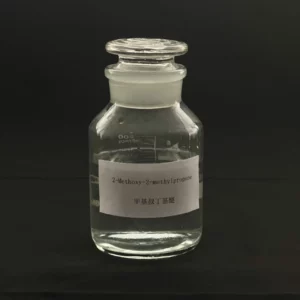Cellosolve, also known as ethylene glycol monomethyl ether (EGME), is a versatile solvent that finds applications in various organic synthesis processes.
While it has been widely used in the past, there are several emerging trends in its application in organic synthesis:
- Green Solvent Alternatives: With increasing emphasis on sustainability and green chemistry, there is growing interest in replacing traditional solvents with more environmentally friendly alternatives. Cellosolve is being explored as a green solvent option due to its relatively low toxicity and biodegradability compared to some other organic solvents.
- Catalytic Reactions: Cellosolve is finding use as a solvent in catalytic reactions, particularly in transition metal-catalyzed processes. It can serve as an effective medium for facilitating reactions such as cross-coupling reactions, hydrogenation, and various metal-catalyzed transformations.
- Biomass Conversion: Cellosolve is being investigated for its potential application in the conversion of biomass into value-added chemicals and fuels. It can act as a solvent for biomass pretreatment processes, such as hydrolysis and depolymerization, leading to the production of biofuels, platform chemicals, and other renewable products.
- Electrochemical Synthesis: Cellosolve is being explored as a solvent in electrochemical synthesis processes, where it can serve as a medium for facilitating electrochemical reactions. Its high dielectric constant and solvation properties make it suitable for use in electrolytes for various electrochemical transformations.
- Medicinal Chemistry: Cellosolve is finding application in medicinal chemistry research as a solvent for the synthesis and purification of pharmaceutical compounds. It can be particularly useful in processes involving sensitive intermediates or reactions that require precise control of reaction conditions.
- Flow Chemistry: Cellosolve is being investigated for its potential use in continuous flow chemistry systems. Its favorable physical properties, such as low viscosity and high boiling point, make it suitable for use as a solvent in flow reactors, enabling efficient and scalable synthesis processes.
- Metal-Organic Frameworks (MOFs) Synthesis: Cellosolve is being explored as a solvent for the synthesis of metal-organic frameworks (MOFs), which are porous materials with applications in gas storage, separation, and catalysis. Its ability to dissolve a wide range of metal salts and organic ligands makes it suitable for MOF synthesis.
Overall, the emerging trends in the application of Cellosolve in organic synthesis reflect a growing interest in sustainable and efficient synthetic methodologies, as well as its versatility as a solvent in various chemical transformations. Continued research and development in these areas are likely to further expand its utility in organic synthesis in the coming years.
